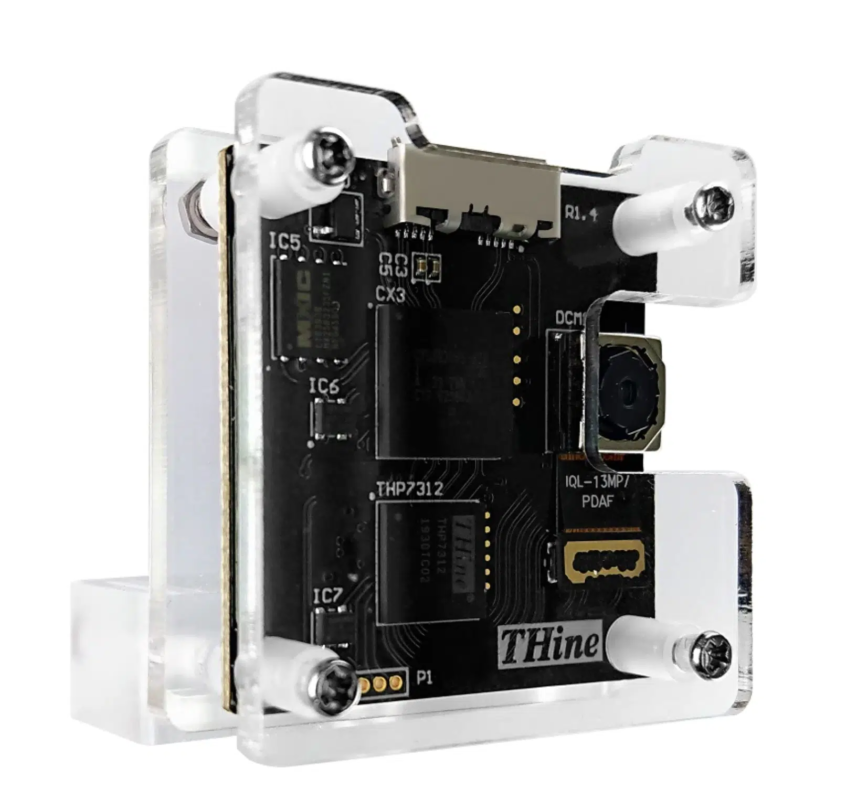[ad_1]
The 13MP PDAF kit enhances image quality and precision, is suitable for dynamic photography, and revolutionizes the field for professionals and hobbyists.

Phase-detection auto-focus (PDAF) represents a significant advancement in camera technology, offering rapid and precise focusing capabilities essential in modern photography. This technology, now widely adopted in professional-grade cameras and smartphones, stands out for its ability to quickly and accurately lock focus on a subject, greatly enhancing the quality of images. Particularly beneficial in dynamic shooting scenarios, such as sports and wildlife photography, where subjects are in constant motion, PDAF ensures sharp, clear images even under challenging conditions. Its integration into contemporary imaging devices has revolutionized the field, making high-quality photography more accessible and user-friendly, and has become a pivotal feature for photographers and videographers alike.
In collaboration with THine Solutions Inc., Infineon has developed the THSCU101, a reference design kit (RDK) featuring a 13MP Phase-Detection Auto-Focus (PDAF) UVC camera. The THEIA-CAM Kit, incorporating Infineon’s EZ-USB CX3 USB 3.0 camera controller and THine’s THP7312 image signal processor (ISP), offers a sophisticated imaging solution. Central to this kit is a 13MP camera module equipped with Phase-Detection Auto-Focus (PDAF) based on Sony’s IMX258 CMOS image sensor. This setup is further enhanced by ISP firmware designed to standardize image quality across different CMOS camera modules, ensuring consistency in high-quality image production.
THine’s THP7312 ISP is designed for high-resolution outputs, supporting up to 16 megapixels, and is recognized for its high speed, low latency, and energy efficiency. Infineon’s EZ-USB CX3 adds the advantage of SuperSpeed USB connectivity to image sensors conforming to the MIPI Camera Serial Interface 2 (CSI-2) standard. The kit’s plug-and-play capability and firmware tailored for USB camera functionalities streamline the development process and reduce engineering expenses. This kit can be ideal for developers as both a ready-to-use product and a development tool for advanced camera systems.
The reference design kit is versatile and suitable for a broad array of camera-based applications, such as body cameras, barcode scanners, surveillance systems, webcams, augmented reality (AR) eyewear, biometric systems, visual aid glasses, microscopes, medical endoscopes, document scanners, and equipment for machine vision.
This advanced imaging solution offers high-resolution capabilities, encompassing 13 Mega Pixel, 4K2K, and 1080p options. The image quality is finely tuned, featuring automatic adjustments for focus, white balance, and exposure, ensuring optimal image output. For additional connectivity, it includes an I2C master controller, an I2S master for audio transmission, a UART supporting up to 4 Mbps, and a 33 MHz SPI master. The system also has twelve GPIOs and boasts ultra-low power consumption in core power-down mode. It has independent power domains for the core and I/O, with the core operating at 1.2 V and I2 S, UART, and SPI functioning at 1.8 to 3.3 V. The I2C and I/O also operate at 1.8 to 3.3 V.
Infineon Technologies and THine Solutions Inc. have tested this reference design.. It comes with a Bill of Materials (BOM), schematics, etc. You can find additional data about the reference design on the company’s website. To read more about this reference design, click here.
Source link

